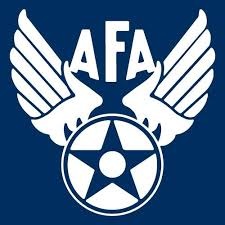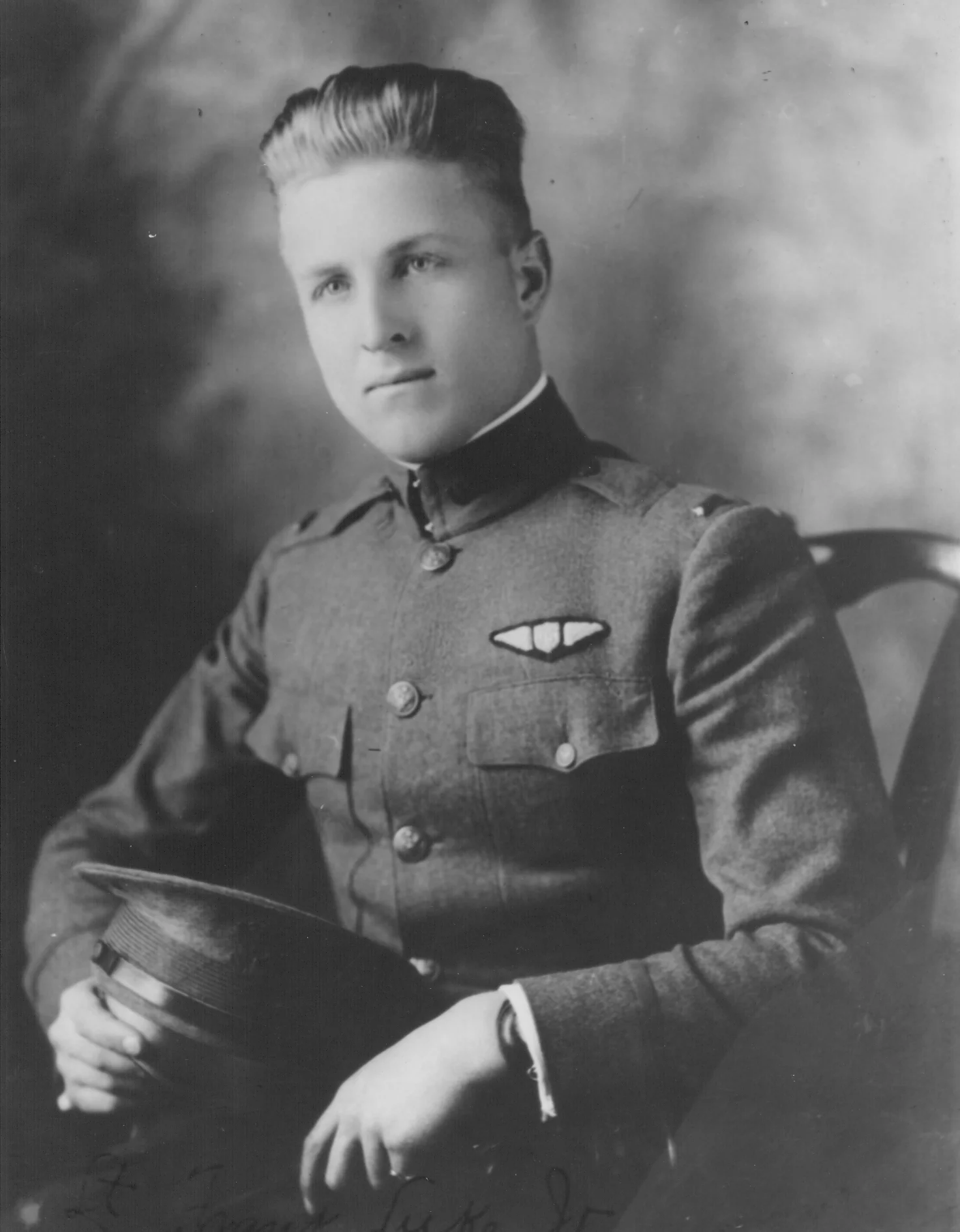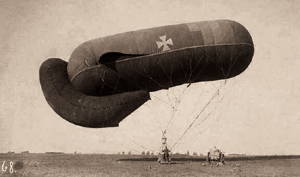September 29, 2018 marked the 100th anniversary of the death of Frank Luke, Jr. namesake of Luke Air Force Base and Frank Luke Chapter #151.
Frank Luke, Jr. was born on May 19, 1897, in Phoenix after his family emigrated from Germany to America in 1874. Frank was the fifth child of nine. Following America's entry into World War I in April 1917, Frank enlisted in the U.S. Signal Corps, Aviation Section on September 25, 1917 and attended pilot training in Texas and California. After being commissioned a Second Lieutenant in March 1918, he deployed to France for further training. In July he was assigned to the 27th Aero Squadron.
The 27th Aero Squadron was under standing orders to destroy German observation balloons. Because of this order, Luke, along with his close friend Lt. Joseph Wehner continually volunteered to attack these important targets although they were heavily defended by anti-aircraft units. The two pilots had a remarkable string of victories together with Luke attacking the balloons and Wehner flying protective cover. Wehner was killed in action on September 18, 1918, in a dogfight with Fokker D.VIIs which were attacking Luke. Luke then shot down two of these D.VIIs and two balloons.
Between September 12 and September 29, Luke was credited with shooting down 14 German balloons and four airplanes. Luke achieved these 18 victories during just 10 sorties in eight days, a feat unsurpassed by any pilot in World War I.
2nd Lt. Frank Luke, Jr. with his SPAD S.XIII on September 19, 1918 near Rattentout Farm, France.
Luke's final flight took place during the first phase of the Meuse-Argonne Offensive on September 28, after achieving his 14th and 15th victories in his SPAD XIII. On September 29, Luke took off without authorization and flew to a forward airbase at Verdun. That evening Luke flew to the front to attack three balloons in the vicinity of Dun-sur-Meuse, six miles behind the German lines. He first dropped a message to a nearby U.S. balloon company, alerting them to observe his imminent attacks. Luke shot down the enemy balloons but was severely wounded by a single machine gun bullet. Luke landed in a field just west of the small village of Murvaux after strafing a group of German soldiers on the ground near the Ruisseau de Bradon. Although weakened by his wound, he made his way toward a stream intending to reach the cover of its adjacent underbrush but collapsed some 200 meters from his airplane. Approached by German infantry, mortally wounded Luke drew his Colt Model 1911 pistol and fired several rounds at his attackers before dying.
On September 30 the Germans buried Luke in the Murvaux cemetery where his body was retrieved two months later by the American forces. His final resting place is the Meuse-Argonne American Cemetery and Memorial, located east of the village of Romagne-sous-Montfaucon.
Tethered balloons such as this one were heavily defended by German ground forces and anti-aircraft weapons. Shooting one down was no easy task.
Luke has been cited as the second-ranking American ace of World War I, second only to Eddie Rickenbacker among pilots serving with the AEF. Luke's time on the front was comparatively short and 17 of Luke's 18 victories were officially recorded as destroyed, versus only 11 of Rickenbacker's 26.
Although Luke was still a Second Lieutenant at the time of his death he later received a posthumous promotion to First Lieutenant. Luke was awarded the Congressional Medal of Honor, the first pilot to receive this honor. Luke also received the Distinguished Service Cross with Bronze Oak Leaf Cluster.
Eddie Rickenbacker said of Luke, "He was the most daring aviator and greatest fighter pilot of the entire war. His life is one of the brightest glories of our Air Service. He went on a rampage and shot down fourteen enemy aircraft, including ten balloons, in eight days. No other ace, even the dreaded Richthofen, had ever come close to that."
Video courtesy of the American Legion Arizona Department
Medal of Honor Frank Luke Jr.
Medal of Honor recipient Frank Luke, Jr.
AWARDED FOR ACTIONS
DURING WORLD WAR I
Service: Army Air Forces
Battalion: 27th Aero Squadron
Division: American Expeditionary Forces
GENERAL ORDERS:
War Department, General Orders 59 (May 3, 1919)
Citation:
The President of the United States of America, in the name of Congress, takes pride in presenting the Medal of Honor (Posthumously) to Second Lieutenant (Air Service) Frank Luke, Jr., United States Army Air Service, for extraordinary heroism while serving as Pilot, 27th Aero Squadron, 1st Pursuit Group, Air Service, A.E.F., in action at Murvaux, France, 29 September 1918. After having previously destroyed a number of enemy aircraft within 17 days Second Lieutenant Luke voluntarily started on a patrol after German observation balloons. Though pursued by eight German planes which were protecting the enemy balloon line, he unhesitatingly attacked and shot down in flames three German balloons, being himself under heavy fire from ground batteries and the hostile planes. Severely wounded, he descended to within 50 meters of the ground, and flying at this low altitude near the town of Murvaux opened fire upon enemy troops, killing six and wounding as many more. Forced to make a landing and surrounded on all sides by the enemy, who called upon him to surrender, he drew his automatic pistol and defended himself gallantly until he fell dead from a wound in the chest.





